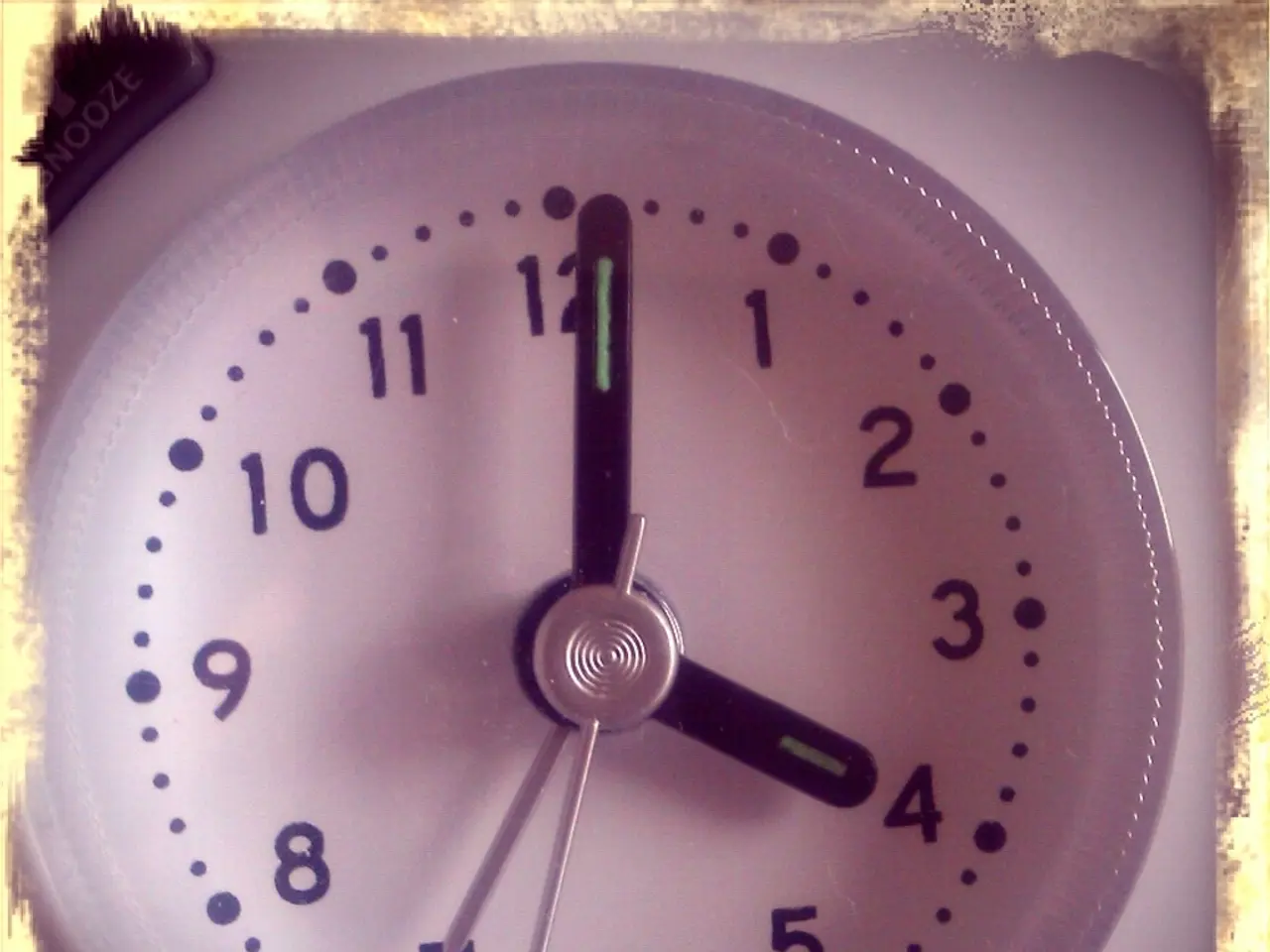Annual Competition for Precise Timekeeping: Tune-Up for Oscillators
In the world of DIY electronics, a new trend is emerging: the creation of GPS-level clock calibrators for wall clocks with Lavet-type stepper motors. These devices aim to achieve GPS-level timing accuracy, helping to solve the common issue of wall clocks losing minutes over time.
The heart of these projects lies in a combination of a GPS receiver, a microcontroller, and an interface to control the clock motor steps according to an accurate timebase.
One approach uses a GPS Disciplined Oscillator (GPSDO) that derives a 1 Pulse-Per-Second (1PPS) signal locked to GPS time. This signal serves as a reference clock to ensure timing accuracy. For instance, a GPSDO uses an oven-controlled crystal oscillator (OCXO) controlled by the GPS 1PPS to keep the oscillator frequency exact within nano- or microsecond precision.
A microcontroller, such as an Arduino, Cypress CY8KIT, or NXP LPC845, reads the 1PPS pulses and calculates the difference between the clock’s current displayed time and the GPS time reference. It then drives the Lavet-type stepper motor to correct any timing error by stepping the motor forward or backward to properly align the wall clock time.
For example, the CY8KIT project uses a Cypress PSoC microcontroller as a basis to tune cheap clocks via GPS timing. It controls multiple clocks with Lavet stepper motors, likely communicating over a bus, and enabling easy adjustment with GPS accuracy.
The calibration algorithm involves waiting for the GPS 1PPS signal as a timing anchor, comparing the internal clock position (reading the position of the clock's hour/minute hands or counting motor steps), then driving the Lavet stepper motor pulses precisely to correct time drift.
To handle the motor control, the microcontroller outputs carefully timed step pulses matching the Lavet motor’s requirements, which typically step once per second (or a fraction thereof). Adjustments can be made by skipping or adding steps over time to keep synchronization with GPS time.
Projects typically also include user interface elements (buttons, displays, or wireless interfaces) to visualize and configure clock calibration parameters, firmware, or clock modes.
Open-source projects like the “MetaMetaClock” demonstrate these principles using microcontrollers and GPS timing for large arrays of stepper-driven clocks, offering firmware and hardware designs on GitHub.
While no single detailed step-by-step DIY guide specific to Lavet motors and GPS calibrator was found, combining available GPSDO designs with microcontroller clock stepper control firmware as in these projects represents the typical state-of-the-art approach.
If you're interested in building your own GPS-based calibrator for Lavet motor clocks, we'd love to hear from you! Share your experiences, challenges, and successes with us. Who knows, your project might inspire the next generation of DIY clock calibrators!
- Incorporating cutting-edge technology such as GPSDO and microcontrollers with data-and-cloud-computing capabilities can enhance these DIY clock calibrators, providing real-time updates, remote controlling features, and analytics on clock accuracy.
- To make these clock calibrators more versatile and efficient, hardware upgrades like integrating gadgets such as wireless modules can facilitate wireless communication between multiple calibrators, ensuring seamless synchronization within a network.




